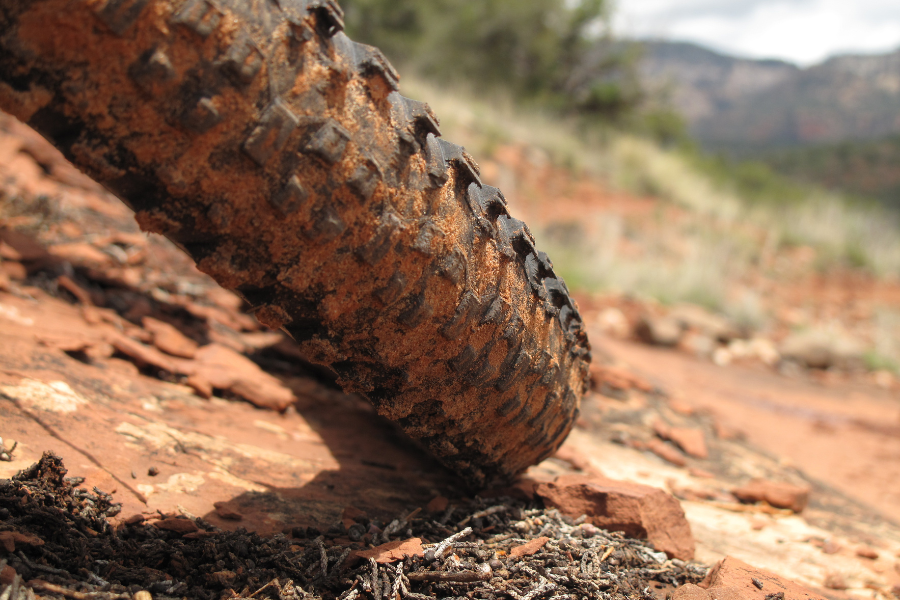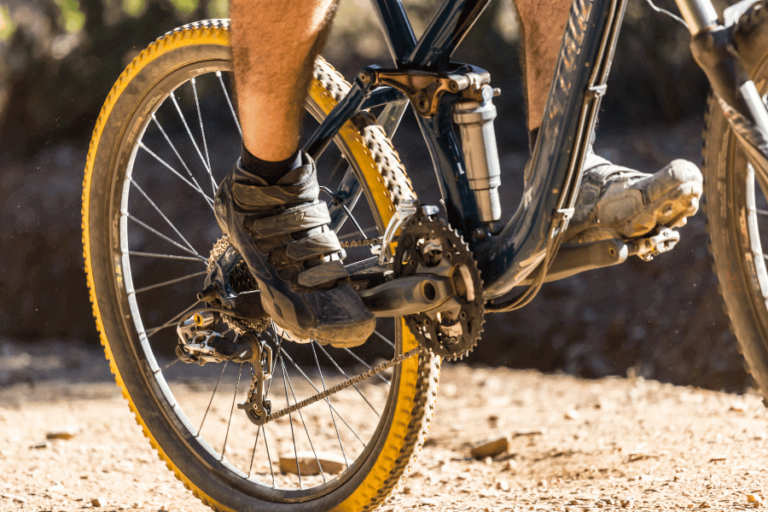26″ vs 27.5″ vs. 29″ Tires
Mountain bikes are used for extreme sports. They add a thrill to your life when you go off-road or try stunts. Also, they are a good way to get your exercise in.
When it comes to mountain biking, choosing the right tire size can make a significant difference in your riding experience. Let RideBHM give you the low down.
26″ vs 27.5″ vs. 29″ Tires
27.5” and 29” tires have become very popular in recent years, although 26” tires have been the standard for years. There are pros and cons to each tire, and it is important to understand these differences before making a choice about which to purchase.
This blog post will dissect the differences between 26”, 27.5”, and 29” tires. You will also get an expert opinion on the perfect option according to how and where you ride.
26″
For many years, mountain bikers have used 26-inch tires because they can overcome obstacles swiftly and accelerate quickly. This made them a perfect option for jumping and trailing.
26-inch tires have advantages that set them apart in the tire market, but there are some downsides. These tires usually find it difficult to roll over obstacles because of their size. Also, they are usually slippery on mud or wet terrain.
27.5″
These tires have gained more recognition than the 26” tires because they are not as slippery on muddy terrain. When you ride the 27.5″, you hardly know the changes unless you check the rims.
When you ride on it, you won’t feel the height of 29” since it is a slight size away from the standard 26″. Furthermore, this is the only mountain bike tire that uses a 15-mm thru-axle. However, 27.5” tires tend to be slower than 26” tires and less maneuverable.
Experts differ on the optimum applications for 27.5″ tires; however, they are frequently suggested for riders looking for a solid all-around tire size for any kind of terrain.
29″
The 29ers have evidently become popular. They can overcome obstacles and potholes on the road. With this feature, they are the best for technical descents and climbs.
On the other hand, it has some limitations compared with smaller tire sizes. It is slower in acceleration and less maneuverable. It is also hard to fit into small frames.
However, experts pick them as the best for heavy and tall riders and tough terrain because of their balance.
Similarities Between 26″, 27.5″, and 29″ Tire Sizes
These tire sizes are designed for mountain bikes. While they differ, they share some similarities based on their design and usage. So let’s discuss the similarities between them.
Off-road Use
26”, 27.5”, and 29” tires are designed for off-road riding. Therefore, they are more robust and wider than normal road bikes because, generally, they provide better control on rough terrain.
Pattern of Tread
There are various patterns of tread for 26″, 27.5″, and 29″ tires. This is handy when you need a tire that has knobs because one with a smooth pattern helps you move faster as you ride.
Tubeless
The increase in demand for these tires has made them available in tubeless form. This type of tire has great advantages: greater traction and decreased resistance to rolling.
Differences Between 26″, 27.5″, and 29″ Tire Sizes
While these tires have their individual qualities, advantages, and use cases, there are some differences that are very important to note.
Acceleration
You cannot expect these tires to have the same takeoff speed. 26-inch tires are smaller in size.
They have quicker acceleration and are superb at maneuvering. The 27.5” tires have a better balance than the 26” tires and a better rolling speed than the 29″, while on the other hand, the 29” tires are less nimble and heavier than the smaller tires. This makes them sturdy in technical terrain and tight corners.
Traction
Following 29″ tires in terms of traction are 26″ and 27.5″ tires. Tire size is only one element of general tire performance. Tire width and pressure may influence how well a tire works. All these must be considered when selecting the best tire for your style of riding and conditions.
Wheel Size
The wheel size of these tires is one difference you will notice. A bigger wheel will roll over obstacles like holes and bumps faster and more easily. Secondly, a bigger wheel will keep your tire pressure low and give you better grip and comfort. Also, it will be less work for the shock absorbers when set harder, and for shorter travel, larger wheels absorb bumps better due to low pressure and maneuverability.
Expert Opinions
We spoke to many mountain biking experts for their opinions on the ideal tire size for various riding conditions and styles before creating this informative guide. An expert said that 29” tires are the best for racing and cross-country riding, while another expert, Jane Smith, a mountain bike instructor, said 27.5″ tires are ideal for technical riding.
They have better balance on the ground and can maneuver and climb obstacles easily and quickly on flowy trails.
Lastly, 26” tires are the best for pump tracks and dirt jumping because they have fast acceleration and quick maneuverability. These features are important for stunts.
So, there is no ideal tire size. All the tires serve different purposes, and depending on your biking activity, you might choose one over the other.
RideBHM
The 26”, 27.5”, and 29” tires suit mountain bikes, as they all have advantages that are suitable for different conditions. With their differences and similarities, you can make your choice based on where you want to ride—whether it is a hard, wet, or muddy road, these tires have something to offer.
The 26” is ideal for faster acceleration, downhill riding, and maneuvers. The 27.5” is a better option for comfort and speed than the 26” and has lighter steering than the 29”. Lastly, the 29” is perfect for fast cross-terrain riding, long-distance riding, and overcoming bumps. If you love big tires, the 29” tire is the way to go.
Reach out to us at RideBHM for all your mountain biking needs.






